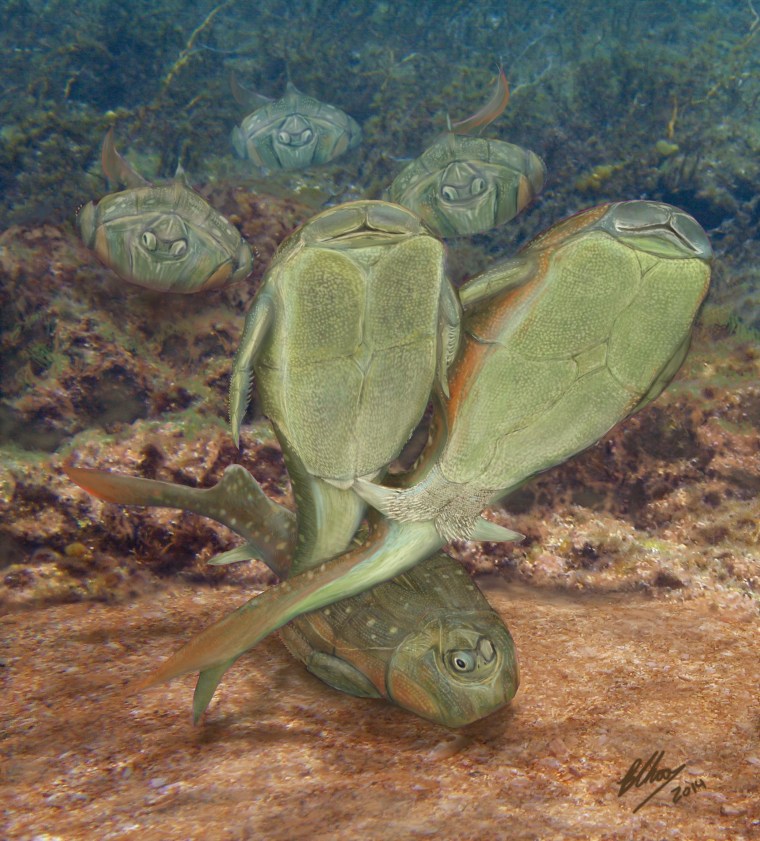Scientists studying fossils have discovered that the intimate act of sexual intercourse used by humans was pioneered by ancient armored fishes, called placoderms, about 385 million years ago in Scotland. In an important discovery in the evolutionary history of sexual reproduction, the scientists found that male fossils of the Microbrachius dicki, which belong to a placoderm group, developed bony L-shaped genital limbs called claspers to transfer sperm to females. Females, for their part, developed small paired bones to lock the male organs in place for mating.
Placoderms are the earliest vertebrate ancestors of humans. "Placoderms were once thought to be a dead-end group with no live relatives, but recent studies show that our own evolution is deeply rooted in placoderms and that many of the features we have -- such as jaws, teeth and paired limbs -- first originated with this group of fishes," said John Long, a paleontologist at Flinders University in South Australia who led the research. This new finding, he added, shows that "they gave us the intimate act of sexual intercourse as well."
IN-DEPTH
- Experts Desperate to Keep Flying Carp Out of Great Lakes
- Fifty Tons of Dead Fish Wash Up in Mexican Lake
- Arapaima Alert: Amazon's Biggest Fish is Going Extinct
--- Reuters
